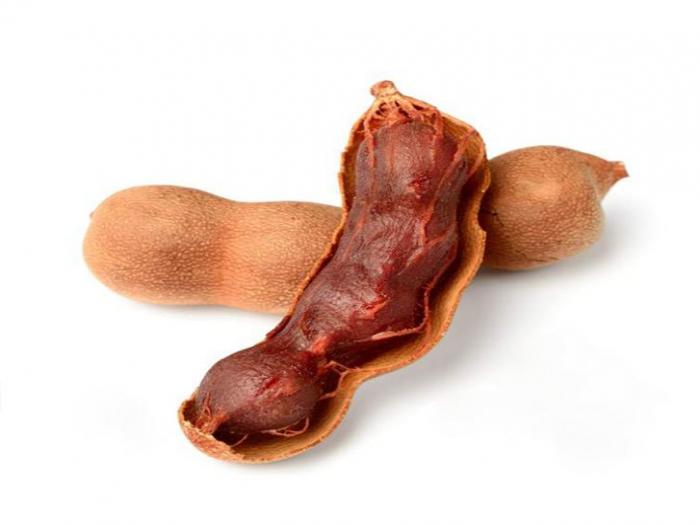
Sweet/Sour Tamarind
Tamarind is a fruit that is popular in the foods of Southeast Asia, North Africa and India. While tamarinds are typically sweet and sour in flavor, they tend to become sweeter as they ripen. Tamarinds contain small amounts of a variety of vitamins, including vitamins A, C, E and K. In addition, tamarinds are a rich source of a number of B-vitamins. As all B-vitamins are essential to the metabolism of glucose, fats and protein, tamarinds can help you to meet your fitness goals. Tamarind comes in sweet and sour varieties. The sour variety is used in Indian cooking, and the sweet version flavors the cuisine of Thailand. How to use • If you haven’t had fresh Tamarind, it can seem a bit weird. The shell is dry and brittle, easily broken • Once you remove all the shell, you have to pull off the veins. They look and feel a bit like roots. • Beneath the flesh of the fruit are seeds. Be careful not to eat those, but you can either suck the paste-like sticky fruit off, or you can pull it off with your fingers. • When you need a larger amount of Tamarind paste, shell and remove veins on Tamarind. Place the meat in a broad bottom bowl and cover with warm tap water. • Let it sit for an hour. Strain and discard the water. • Seed by seed; rub the tamarind seeds against the mesh of a mesh strainer, pushing the pulp through the strainer. • When the seed is shiny and clean of pulp, discard the seed. • Tamarind is typically used in equatorial cuisines, such as Indian, Mexican, and Thai. Also known as imli, tamarind is used as a souring agent in many cuisines, especially those of South and Southeast Asia. • There, you’ll find it simmered in curries, stirred into drinks, made into relishes and sauces, and even cooked down into a sweet and spicy dessert paste. If you’ve been to an Indian restaurant lately, chances are that a bowl of tamarind chutney hit the table not long after you were seated. • Tamarind’s flavor is potent but elusive. With its distinct sweet-sour flavor, a little tamarind goes a long way. Depending on its context, tamarind can express a big, bold personality. It can also whisper its presence, providing a now-you-taste-it-now-you-don’t background for other flavors in a dish. How to store: • Store whole pods in a cool, dark place. • Unopened, compressed tamarind can be stored indefinitely in a cool, dark place. After opening, store it in the refrigerator tightly wrapped or capped; it will stay good for at least three months. Simply cut off the amount you want to use with a sharp, heavy knife. • Well wrapped, frozen, unsweetened tamarind pulp keeps indefinitely in the freezer. Break it into 1- or 2-oz. pieces and store them in heavy-gauge zip-top bags for easy retrieval.